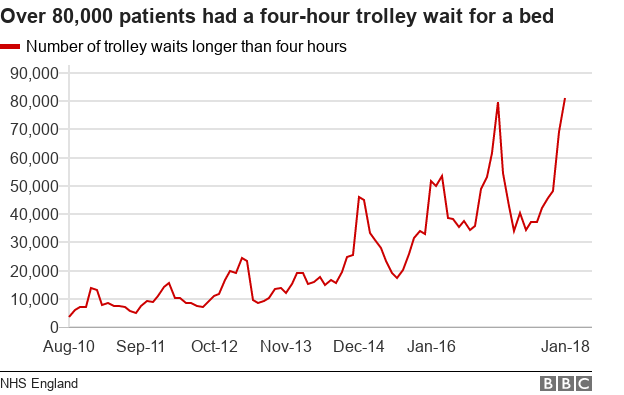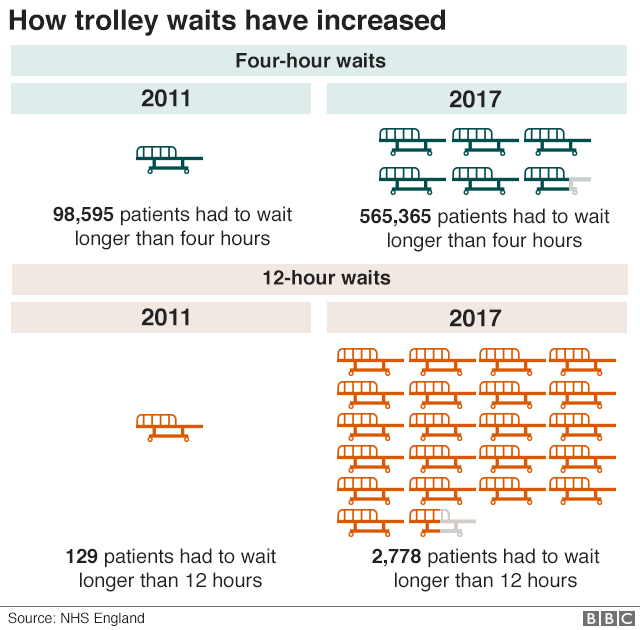NHS pressure: Hospital corridors 'the new emergency wards'
- Published
BBC gains exclusive access to A&E at University Hospital of North Tees
Hospital corridors are the new emergency wards, experts say, with growing numbers of patients finding themselves stuck on trolleys because there are no beds for them.
The warning comes as figures for the NHS in England showed January was one of the most difficult months on record.
Record numbers of seriously-ill patients faced delays waiting for a bed - with 1,000 waiting over 12 hours.
It comes despite the mass cancellation of routine treatments to ease pressure.
The move was ordered by NHS bosses before Christmas when it became clear hospitals were struggling.
If you can't see the NHS Tracker, click or tap here, external.

But the four-hour A&E target was still missed for the 30th month in a row; with 85.3% of patients seen, marginally better than the 85.1% in December.
Similar performance is being recorded in Scotland, while Wales and Northern Ireland are doing even worse.

However, it was the issue of finding beds that has sparked most alarm.
These are known as trolley waits, because patients often find themselves on trolleys in side-rooms and corridors until a bed comes free on a ward.
These tend to be the most seriously-ill patients, so doctors decide to admit them on to a ward rather than treat them in A&E.
Some 81,000 waited more than four hours for a bed in England - one in five of the 390,000 people who needed to be admitted.
Both the four-hour and 12-hour figures for trolley waits were the worst on record - figures go back to 2010.

But this does come amid rising numbers of A&E attendances.
The data from NHS England shows more than two million patients came to A&E during the month, a rise of more than 5% in a year.
Health bosses said with that in mind - and the high levels of flu that have been seen in the worst outbreak since 2011 - the NHS has performed well.
Ian Dalton, chief executive at the regulator NHS Improvement, said it was a "testament" to the dedication of staff that performance had not declined further.
Five secrets of a well-run A&E department
But Prof John Appleby, chief economist at the Nuffield Trust think-tank, said the health service was "creaking at the seams".
He said the growing number of trolley waits showed "corridors had become the new emergency wards".
A spokesperson for the Royal College of Surgeons said: "These figures show just how tough it was for hospitals this winter despite cancellation of planned surgery to free up capacity.
"Surgeons and other frontline NHS staff are working tirelessly to provide the best care possible to patients. But today's figures show that these short-term measures are insufficient to meet NHS targets."
Additional reporting by Clara Guibourg
- Published8 February 2018
- Published4 January 2018

- Published26 December 2017

- Published21 December 2017
